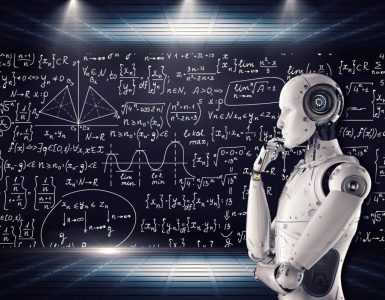Data analytics is a specialized field that uses statistical methods to interpret and visualize data to draw valuable insights from it. It uses various methods, tools, and techniques to find correlations, patterns and trends between variables. This tutorial will cover the essential data analysis techniques every data analyst should know.
What is Data Analysis?
Data analysis means a systematic process of data collecting, analyzing, and transforming raw data into meaningful insights to solve specific problems. For example, a monthly report on total products sold by a company can provide insights such as the best-selling product, busiest days, most profitable hours, and least sold product. Stakeholders use these insights to identify market trends and make data-driven decisions that benefit the company.
Types of Data Analysis
Each organisation stores data in different ways. Raw data can be numerical, categorical, structured, or unstructured, and each of these formats requires a specific approach to analyze. Based on the structure of the raw data collected and the insights needed from it, the types of data analysis in research are as follows:
Descriptive Analysis
Descriptive analysis uses past and present data to identify patterns and correlations with historical trends. It helps in summarising data variables in a consolidated way. Descriptive analysis is very useful for tracking performance over time and making informed decisions based on it. It is one of the key data analytics steps that provides a brief understanding of historical data.
For example, in healthcare, descriptive analysis can be used to summarize patient records to answer questions like:
- How many male and female patients are there?
- Is there a specific popular age group?
- What are the most common illnesses, are they seasonal?
- What are the peak visiting times?
These insights help healthcare providers to understand current trends and improve their services and resources timely.
Diagnostic Analysis
Diagnostic analysis is a type of data analysis that examines raw data to get through the root cause of identified patterns and trends. This helps data analysts to establish relationships between variables and understand why a specific outcome occurred.
For example, if a brand encounters a sudden decrease in their sales, diagnostic analysis can examine customer feedback, pricing factors and seasonal trends to identify the key factors causing the issue.
This enables stakeholders to make targeted and efficient decisions that benefit the organisation.
Predictive Analysis
Predictive analysis can be described as an extension of descriptive analysis, which uses insights from historical data to predict or forecast future trends. Data analysis techniques like time-series analysis and machine learning are mostly used in this type of analysis.
Predictive analysis is broadly used in the stock market to anticipate future risks, price fluctuations, and profit gains based on past performances.
Prescriptive Analysis
Prescriptive analysis takes it a step further by suggesting the best reliable action after forecasting trends and patterns. It uses machine learning algorithms and decision models for these recommendations. This completes the data analysis process and helps stakeholders in decision-making.
For example, a stock market analyst might recommend the most profitable portfolios or stocks to invest in based on market trends.
Data analysis types can be summarized as:
- Descriptive Analysis -> What does the data reveal?
- Diagnostic Analysis -> What factors cause it to happen?
- Predictive Analysis -> What is likely to happen in the future?
- Prescriptive Analysis -> What valuable actions should be taken next?
Data Analysis Methods
As mentioned earlier, raw data can exist in various formats. For instance, data collected from a survey is often textual, while stock market data is mostly numerical. Depending upon the structure and complexity of the data, types of data analysis methods are as follows:
Qualitative Analysis
Qualitative analysis uses non-numerical data like text, images, and audio to extract insights and identify relationships between variables. This type of data is descriptive, making it easy to interpret and categorize.
Examples include customer feedback from surveys, media collected from social media platforms, etc.
Use Case:
- Analyzing customer reviews from the app store to identify customer needs and provide new features.
- Sentiment analysis of social media comments can draw insights into audience opinions and their views on a particular trend, product, or service.
Quantitative Analysis
In quantitative analysis, numerical data is analyzed to identify trends like outliers, ranges, and averages. Statistical data analysis methods are used to visualize raw data through graphs and charts.
Examples include customer age groups, product sales over time, trade volumes, etc.
Use Case:
- Product sales data can provide insights over the most popular color, seasonal trends, profitable months, and their target audience.
- Monthly sales data for a SaaS can help predict future revenue. Discounts could be strategically offered in the most profitable seasons.
| Qualitative Analysis | Quantitative Analysis |
|---|---|
| Data understanding, Data exploration | Data analysis, Data transformation |
| Non-numerical data (text, audio, images) | Numerical data |
| Descriptive insights, less detailed (summarizing data) | Statistical insights, more detailed (numerical analysis with graphs and visuals) |
| Used to get an overview of variables. | Used to identify trends, patterns, and relationships between variables. |
| Mostly used for small datasets. | Mostly used for large-scale data. |
Mixed Methods Analysis
As the name suggests, mixed methods analysis utilizes both qualitative and quantitative methods for a more detailed data analysis, which helps in understanding data better. This analysis method is especially valuable for researchers who want to integrate textual and numerical data to establish relationships between data points.
Examples include a survey based on a specific research problem, that collects user demographics, reviews, and ratings (numerical) in a single form.
Key Data Analysis Techniques
Let’s now learn some essential data analysis techniques used to transform raw data into meaningful insights. But first, it’s important to understand the difference between independent and dependent variables:
- Independent Variable: These are the features used to predict changes in the dependent variable. The better the features, the better will be the model’s accuracy.
- Dependent Variable: This is the target variable that needs to be measured.
Regression Analysis
Regression analysis is a statistical method used to explore the relationship between dependent and independent variables. This data analysis technique helps to understand how variables correlate with each other in a dataset. It is mostly used for continuous data to measure the impact of feature variables on the target variable. Regression analysis can be further categorized into linear, logistic and multiple regression.
Data Analysis Example:
Predicting a patient’s weight based on their height.
Height: feature / independent variable
Weight: target / dependent variable
| import pandas as pd from sklearn.linear_model import LinearRegression data = {‘height’: [120, 130, 135, 140, 180], ‘weight’: [45, 50, 65, 70, 95]} df = pd.DataFrame(data) # assign variables X = df[[‘Height’]] y = df[‘Weight’] # apply linear regression model = LinearRegression() model.fit(X, y) # predict target values # eg. what will be the weight of a patient with a height of 160? pred_weight = model.predict([[160]]) |
Cluster Analysis
Cluster analysis is a data analysis technique that groups together similar data points into sets called clusters. This helps to identify patterns within a dataset.
For instance, segmenting customers by age groups can give insights on their spending habits and extravagant lifestyle.
Data Analysis Example:
Grouping patients based on weight and blood sugar to identify those with high risk of diabetes.
| import pandas as pd from sklearn.cluster import KMeans data = {‘weight’: [55, 60, 65, 70, 75, 40], ‘blood_sugar’: [85, 90, 100, 110, 115, 95]} df = pd.DataFrame(data) X = df[[‘weight’, ‘blood_sugar’]] # define model with 3 clusters: low (0), medium (1), and high (2) kmeans = KMeans(n_clusters=3) kmeans.fit(X) # add cluster labels to df df[‘cluster’] = kmeans.labels_ |
This will assign cluster labels to each of the patients like below:
| weight | blood_sugar | cluster |
| 55 | 85 | 0 |
| 60 | 90 | 1 |
| 65 | 100 | 1 |
| 70 | 110 | 2 |
| 40 | 95 | 0 |
Time Series Analysis
Time series analysis uses periodic data, like monthly sales, daily temperature readings, patient heart rate monitoring, or weekly weather reports, to visualize trends and patterns in data over time. It is commonly applied in weather forecasting, stock prediction, and MRR forecasting.
Data Analysis Example:
Predicting blood pressure based on past records.
| import pandas as pd from sklearn.linear_model import LinearRegression data = {‘month’: [1, 2, 3, 4, 5], ‘blood_pressure’: [110, 125, 120, 135, 140]} df = pd.DataFrame(data) X = df[‘month’] y = df[‘blood_pressure’] model = LinearRegression() model.fit(X, y) # predict the ‘blood_pressure’ for next 3 months input = [[7],[8],[9]] pred = model.predict(input) |
Factor Analysis
Factor analysis is a statistical data analysis technique that analyzes the correlations and covariances between variables by grouping them into smaller components called “factors”. These factors are latent (hidden) variables that represent a common source of variation.
It is used to simplify complex datasets containing a large number of variables. Researchers commonly use factor analysis to identify common variations of data within a specific subject or area.
Data Analysis Example:
For a patient record, if you have variables like exercise duration, calorie intake, and weight, factor analysis can create a factor “fitness” to examine how these variables influence each other.
| import pandas as pd from sklearn.decomposition import FactorAnalysis # exercise in (mins), calorie_intake in (kcal), weight in (kg) data = { ‘exercise’: [20, 30, 40, 20, 15], ‘calorie_intake’: [2500, 3000, 2000, 2800, 2200], ‘weight’: [70, 85, 68, 75, 65] } df = pd.DataFrame(data) # generate factors factor = FactorAnalysis(n_components=1, random_state=42) factors = factor.fit_transform(df) # create factors df factor_df = pd.DataFrame(factors, columns=[‘Lifestyle Factor’]) |
Text Analysis
Text analysis or text mining transforms unstructured textual data into a machine-readable format. This allows data analysts to apply machine learning algorithms such as pattern recognition, annotation, and word frequency distribution on the data.
Text mining is used in sentiment analysis to investigate user feedback and customer reviews.
Data Analysis Example:
Analyzing patient feedback after a session:
| import pandas from pd from sklearn.feature_extraction.text import CountVectorizer from sklearn.feature_extraction.text import ENGLISH_STOP_WORDS comments = [ “The doctor was very kind and helpful.”, “The waiting time was too long.”, “The staff were professional and the rooms were clean.”, “The cost of treatment is very high.” ] # text to bag-of-words vectorizer = CountVectorizer(stop_words=ENGLISH_STOP_WORDS) X = vectorizer.fit_transform(comments) # filter out words words = vectorizer.get_feature_names_out() df = pd.DataFrame(X.toarray(), columns=words) |
The output dataframe will include separate columns for each word, showing its usage:
| comment | cost | time | clean | staff | professional | high |
| “The cost of treatment is very high” | 1 | 0 | 0 | 0 | 0 | 1 |
| “The staff were professional and the rooms were clean.” | 0 | 0 | 1 | 1 | 1 | 0 |
| “The waiting time was too long.” | 0 | 1 | 0 | 0 | 0 | 0 |
The most frequently used words can be treated as high-priority feedback.
Essential Data Analysis Tools
- R: R is an open-source programming language used to perform statistical computing and advanced data analysis steps on huge datasets. It comes with a wide range of powerful libraries and packages for different stages of data analysis in research, making it one of the most used data science tools after Python.
- SAS: It is a statistical software widely used in business analytics to perform complex statistical tasks. SAS is popular in the healthcare and banking sectors.
- SPSS: SPSS or Statistical Package for the Social Sciences is widely preferred by researchers because of its user-friendly interface. It can perform statistical operations like hypothesis testing and data mining smoothly.
Conclusion
The whole process of data analytics plays a crucial role in data science that helps organizations to turn their simple raw data into powerful visualizations, identify trends, and take data-driven decisions accordingly. Learning these essential data analysis tools and techniques allows data professionals to understand relationships between variables better and hence make improved decisions.





Add comment